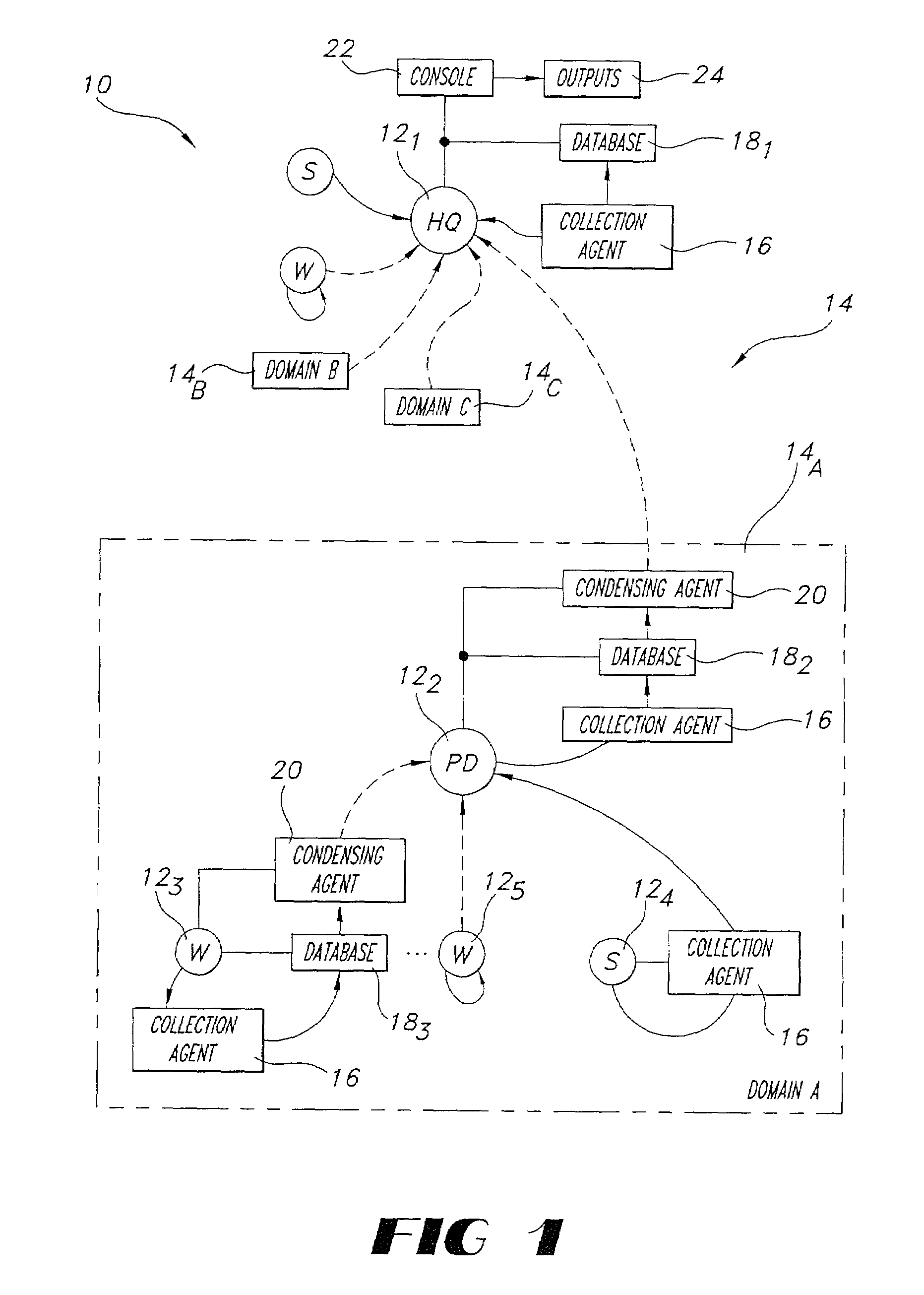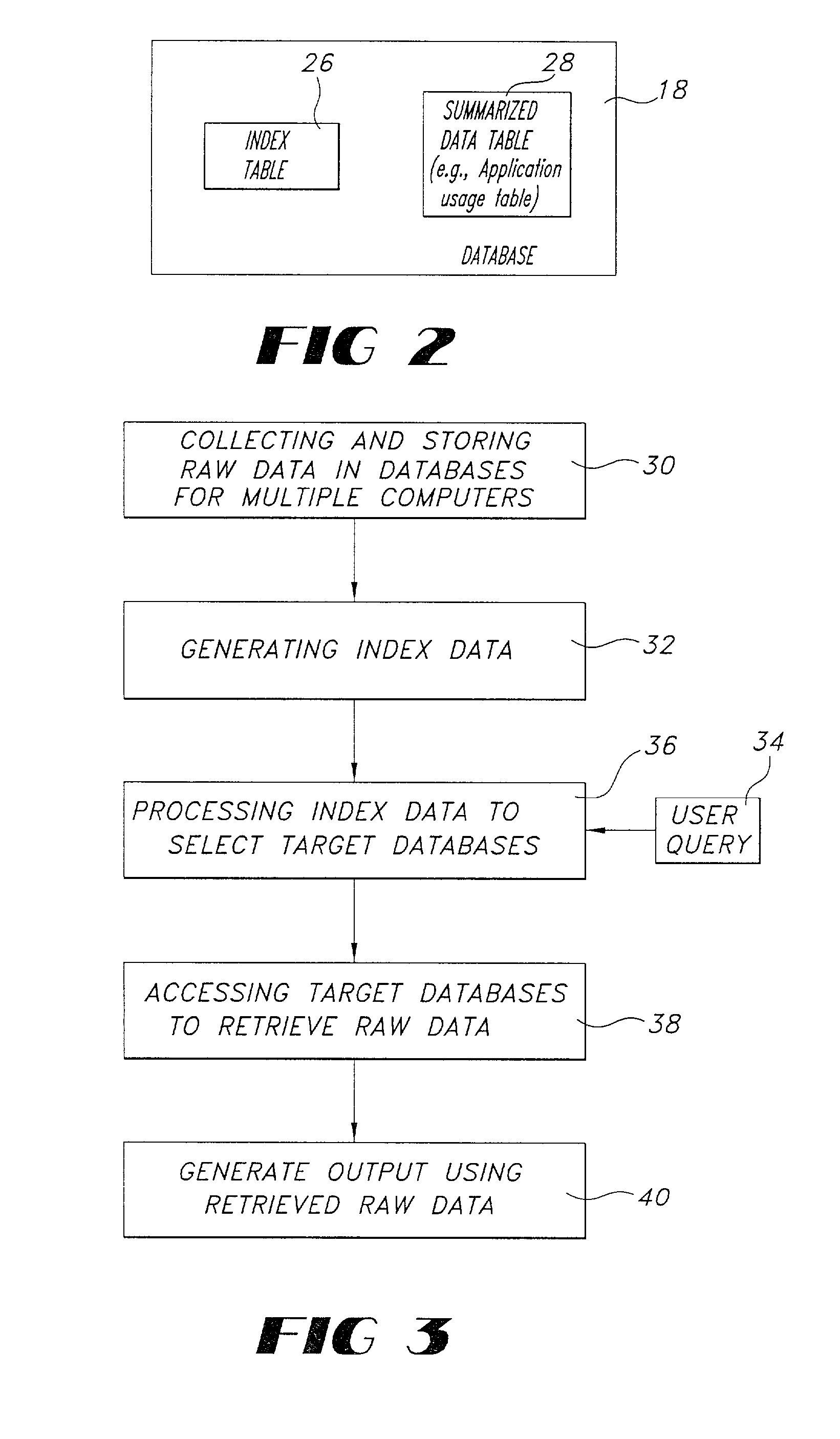System and method for managing information for a plurality of computer systems in a distributed network
- Summary
- Abstract
- Description
- Claims
- Application Information
AI Technical Summary
Benefits of technology
Problems solved by technology
Method used
Image
Examples
Embodiment Construction
[0024]Referring now to the drawings wherein like reference numerals are used to identify identical components in the various views, FIG. 1 shows an apparatus 10 for managing a plurality of computers which are designated 121, 122, . . . 12n, deployed in a distributed network 14. Distributed network 14 may include one or more domains, such as Domain A, designated 14A, Domain B, designated 14B, and Domain C, designated 14C. Computers 121, 122, . . . 12n may comprise conventional server computers and workstation computers. As illustrated in FIG. 1, computers 121, 122, . . . 12n may be arranged in an hierarchical relationship, wherein computer 121 may be a top-level master node (e.g., at a headquarters location), computer 122 may be a primary database (PD) for Domain A (a parent node from which one or more branches extend), and computers 123, 124, and 125 may be a workstation computer (“W”), a server computer (“S”), and another workstation computer, respectively. Although a tree-style hi...
PUM
 Login to View More
Login to View More Abstract
Description
Claims
Application Information
 Login to View More
Login to View More - R&D
- Intellectual Property
- Life Sciences
- Materials
- Tech Scout
- Unparalleled Data Quality
- Higher Quality Content
- 60% Fewer Hallucinations
Browse by: Latest US Patents, China's latest patents, Technical Efficacy Thesaurus, Application Domain, Technology Topic, Popular Technical Reports.
© 2025 PatSnap. All rights reserved.Legal|Privacy policy|Modern Slavery Act Transparency Statement|Sitemap|About US| Contact US: help@patsnap.com



